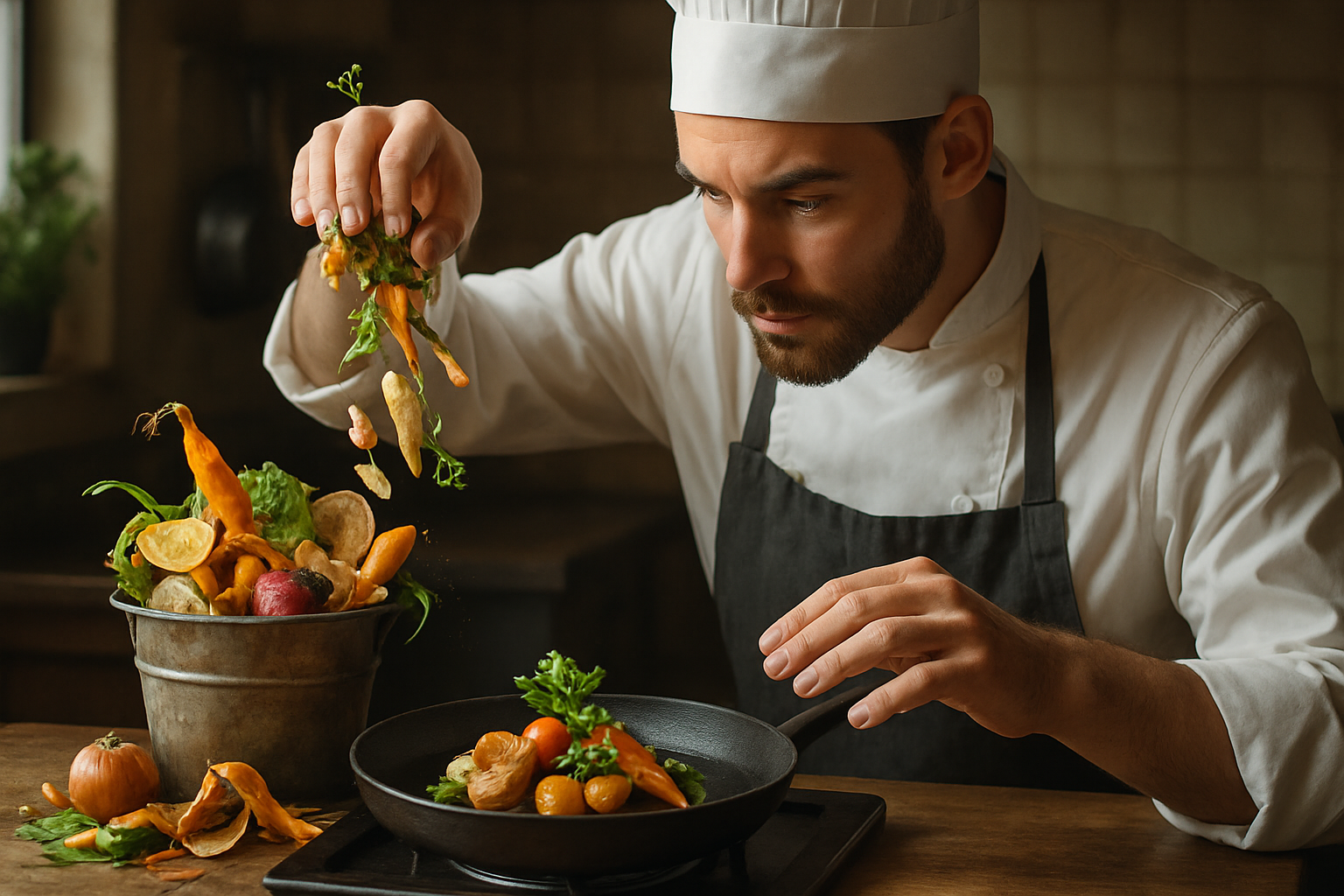Flavor Mapping: The Art of Pairing Unexpected Ingredients
Embark on a thrilling culinary adventure as we delve into the world of flavor mapping. This innovative approach to cooking challenges traditional notions of taste, encouraging chefs and home cooks alike to explore unconventional ingredient pairings. By understanding the science behind flavor profiles and embracing creativity, we can unlock a whole new realm of gastronomic possibilities.

The Science of Synergy
At the heart of successful flavor mapping is the concept of flavor synergy. This occurs when two or more ingredients combine to create a taste experience that is greater than the sum of its parts. The science behind this phenomenon involves chemical reactions between flavor compounds, as well as how our taste buds and olfactory receptors interpret these combinations. For instance, the sulfur compounds in garlic can enhance the perception of certain fruity notes, explaining why garlic and strawberries can work surprisingly well together. Understanding these interactions allows chefs to create dishes that are not only unique but also harmonious and balanced, despite their seemingly disparate components.
Breaking Culinary Boundaries
Flavor mapping challenges us to break free from culinary conventions and explore new taste territories. By pairing ingredients from different cuisines or combining flavors typically associated with sweet dishes in savory applications (and vice versa), we can create truly innovative dishes. Consider the combination of blue cheese and dark chocolate, or the use of lavender in savory meat dishes. These unexpected pairings can create memorable taste experiences that challenge and delight the palate. The key is to approach flavor mapping with an open mind and a willingness to experiment, understanding that some of the most remarkable culinary discoveries come from pushing boundaries.
Tools and Techniques for Flavor Exploration
To effectively practice flavor mapping, chefs and home cooks can employ various tools and techniques. Flavor pairing databases and apps can provide a starting point for exploring potential combinations based on shared flavor compounds. Sensory evaluation exercises, such as blind tastings and aroma identification sessions, can help develop a more nuanced palate and improve one’s ability to identify and combine flavors. Additionally, techniques like sous vide cooking and molecular gastronomy can be used to isolate and intensify specific flavors, allowing for more precise and controlled flavor combinations. By utilizing these resources and methods, cooks can approach flavor mapping in a more systematic and informed way.
From Concept to Plate: Implementing Flavor Mapping
Translating flavor mapping concepts into practical, delicious dishes requires both creativity and technical skill. Start by selecting a base ingredient and identifying its key flavor components. Then, brainstorm complementary or contrasting flavors that could enhance or balance those components. Experiment with different ratios and preparation methods to find the perfect balance. For example, a dish featuring roasted cauliflower might be elevated by the addition of cocoa nibs, which share earthy notes but add complexity and depth. The key is to start with small experiments and gradually refine the combinations based on taste tests and feedback. Remember that texture and presentation also play crucial roles in the overall dining experience, so consider how these elements can further enhance your flavor pairings.
Useful Tips & Facts
• The five basic tastes (sweet, salty, sour, bitter, umami) can be combined in countless ways to create complex flavor profiles.
• Certain flavor combinations work well because they share similar volatile compounds, such as strawberries and basil.
• Heat can alter the flavor profile of ingredients, sometimes creating new compounds that pair well with unexpected partners.
• Cultural background and personal experiences can significantly influence how we perceive and enjoy different flavor combinations.
• Some classic unexpected pairings include watermelon and feta cheese, chocolate and chili, and strawberries and balsamic vinegar.
In conclusion, flavor mapping is more than just a culinary technique; it’s a philosophy that encourages innovation, creativity, and a deeper understanding of the food we eat. By embracing this approach, we open ourselves up to a world of exciting taste experiences and push the boundaries of what’s possible in the kitchen. Whether you’re a professional chef or an adventurous home cook, flavor mapping offers endless opportunities to explore, create, and delight in the rich tapestry of tastes that our global cuisine has to offer. So, the next time you’re in the kitchen, don’t be afraid to think outside the box and let your taste buds guide you to new and exciting flavor frontiers.





